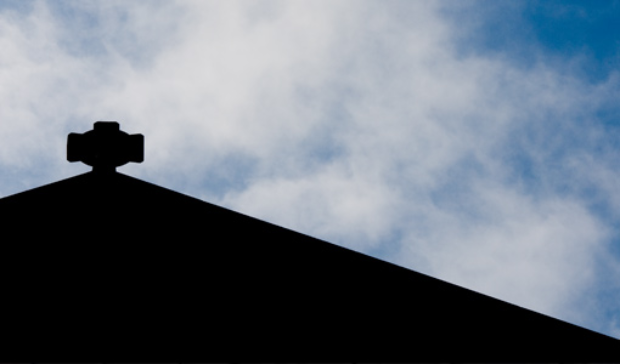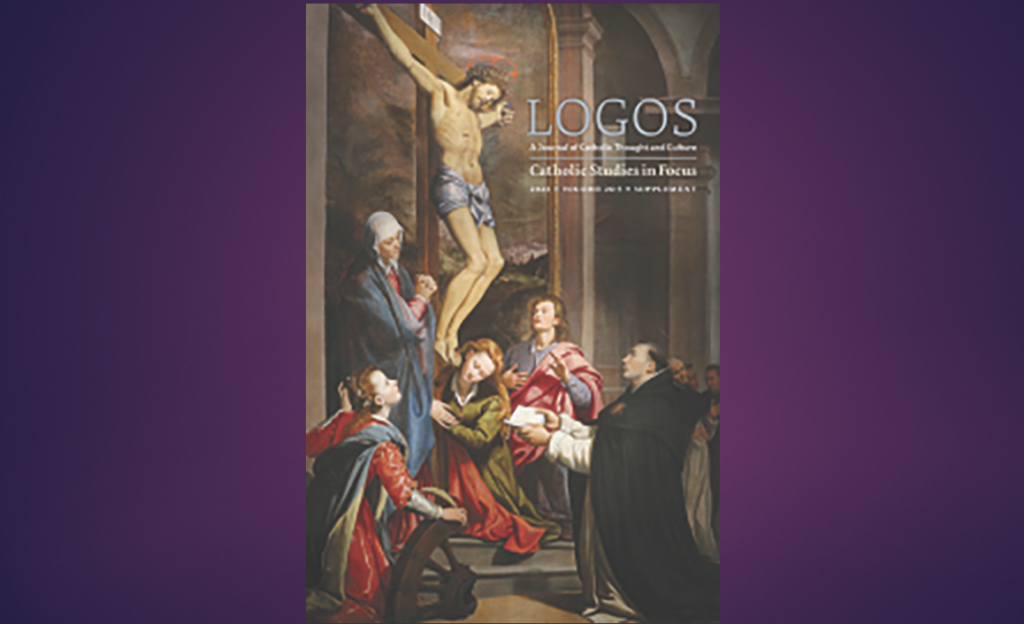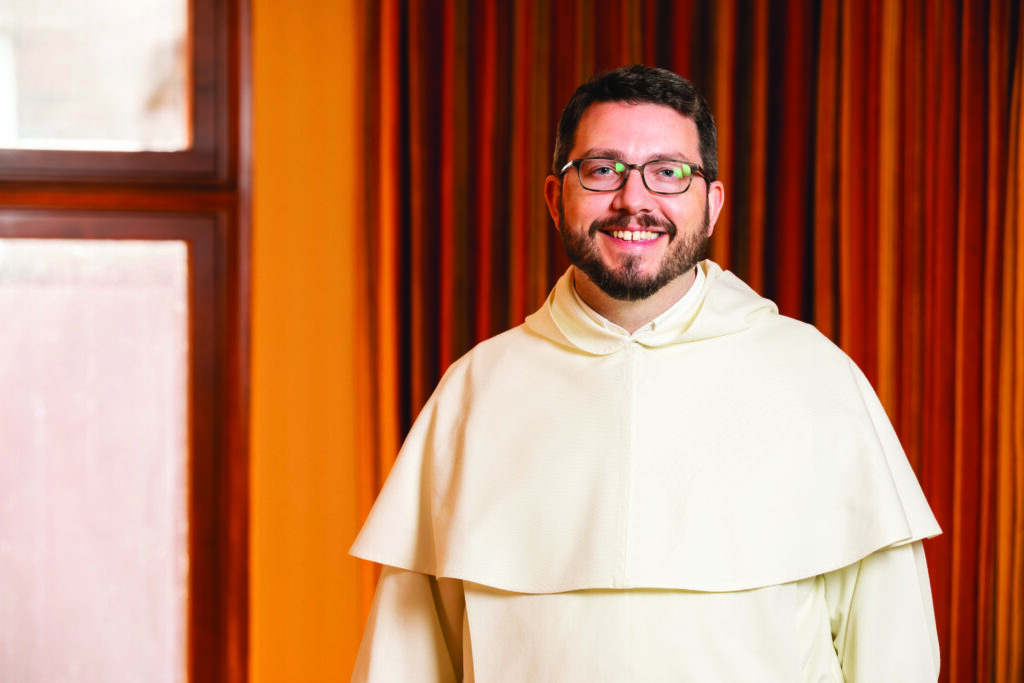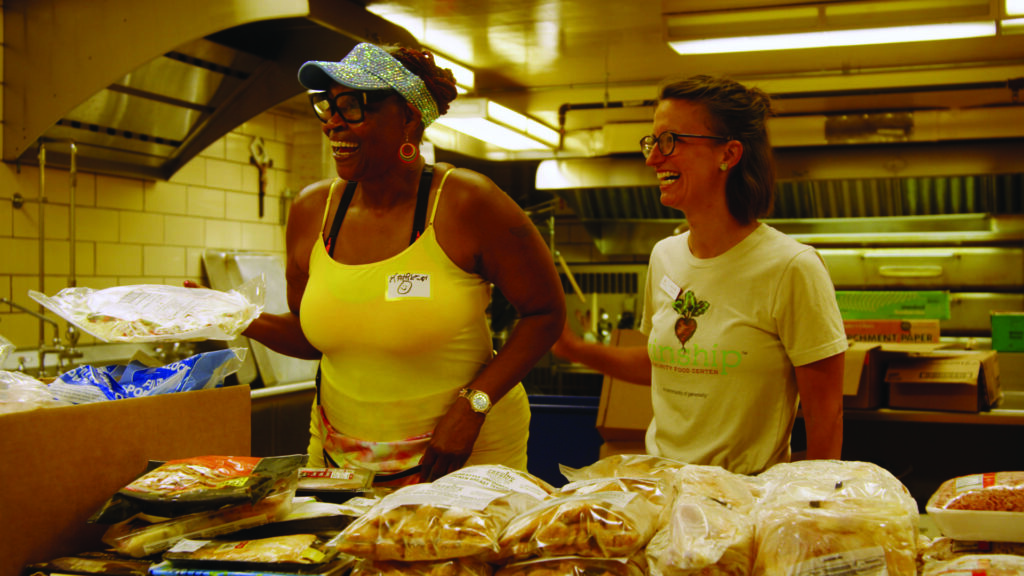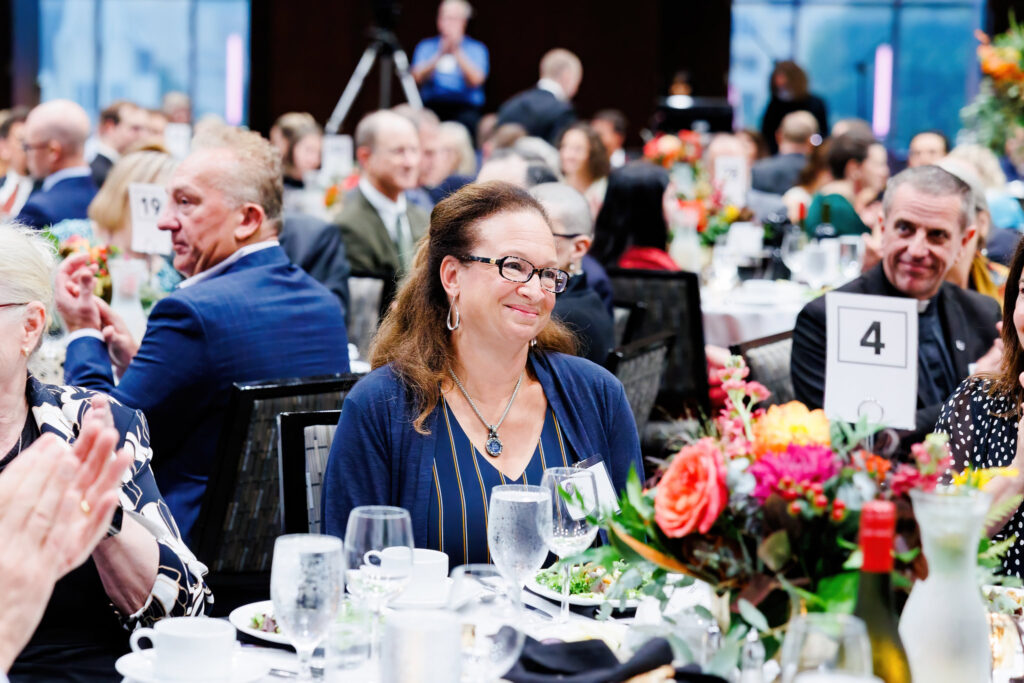The day was rainy and overcast when Dr. Don Briel entered Dr. Michael Naughton’s office unannounced over 10 years ago. It was Briel’s only trip to the “theology outpost” — the department’s additional offices on Grand Avenue and Finn Street — that Naughton recalls, but the importance of the occasion warranted the visit from the department chair. During their conversation, Briel laid out his vision for the Center for Catholic Studies and invited Naughton to be part of it. “It was a moment when I felt a lot of excitement — the sense of hope in the future, the sense of creating something new,” Naughton remembers. “I had full confidence that this project would lead us to great things.”
When the interdisciplinary Catholic Studies program was created in 1992, it was the first program of its kind in the United States. One might say that the program really began in 1990 when the University of St. Thomas formed a committee to contemplate the meaning of the institution’s Catholic identity. Armed with Pope John Paul II’s recently published Ex Corde Ecclesiae (On Catholic Universities), the committee commenced a five-year series of lectures and faculty development initiatives in order to explore the question of what it meant to be a Catholic university. “In the course of those conversations, a number of faculty began to think aloud about the need to create additional opportunities for students to engage their faith and to study the Catholic tradition more intensively,” Briel said.
Catholic Studies began to offer cross listed courses with the Departments of Theology, Philosophy and English in 1993 and, as the program grew, other disciplines were added. But while the undergraduate program was off to a good start, Briel had something more in mind. As he puts it, “I was concerned that if Catholic Studies was to flourish, it needed to have a broader institutional impact on the university and culture than simply a student program. I didn’t see any other place within the institution where this could happen.” With this goal in mind, Briel proposed the development of the Center for Catholic Studies to coordinate a variety of programs on campus, including the John A. Ryan Institute for Catholic Social Thought, which had been previously created, and the Murphy Institute for Catholic Thought, Law, and Public Policy, which was developed later.
With a generous endowment from donors David and Barbara Koch and the steadfast support of Monsignor Terrence J. Murphy, then chancellor of the university, the Center for Catholic Studies was established in 1995. Briel was appointed its first director the following year. “First, I expected that the Center would be a catalyst within the university to promote ongoing reflection on its distinctive Catholic mission,” Briel stated. “Second, I thought the Center could represent within the complexity of the university’s academic structure a coherent expression of the integrity of the Catholic intellectual tradition — what it could look like as a whole, and not just its various pieces.” “Don Briel realized that the need was not simply for a renewal of Catholic identity on campus, but also for a new comprehensive interdisciplinary project,” Naughton added. “The Center is a new structure within the university, which I think is very critical.”
Briel also hoped that the Center for Catholic Studies would contribute to a revitalization of Catholic identity not just on campus but on a national, even international, scale. And indeed, as the Center grew, so did its reach. In spring 1997 the scholarly quarterly Logos: A Journal of Catholic Thought and Culture emerged to address the interdisciplinary mission of Catholic Studies. According to Briel, “We noted that there really were not any journals of the kind that had once flourished in Catholic circles, those that explored in a fully interdisciplinary way the rich depth of the Catholic intellectual tradition.” Logos was created to fill that void. The following year, 1998, marked the first opportunity for Catholic Studies students to study in Rome under an agreement with the Pontifical University of St. Thomas, more commonly known as the Angelicum University. Two years later, St. Thomas’ newly purchased Bernardi Residence, located close to the Vatican, allowed students to also live in community while studying in the Eternal City. “I thought the ability to study in Rome was important for many reasons,” Briel recalled. “Rome is the heart of the Church, so you have an opportunity to understand, maybe for the first time, the universal character of Catholicism. You have only to step into St. Peter’s Square to recognize the extraordinary diversity and unity of Catholic life and thought. This is a profoundly liberating realization. From that point of view, I think it’s an invaluable experience for our students.”
Soon, the need for a master’s degree program in Catholic Studies was apparent. A planning committee began to work on the project in 1999, and the first group of graduate students began their studies in the fall of 2001. “The master’s program provides students with advanced training in Catholic thought and culture that will enhance their future study, professional field or specific ministry within the Church,” Briel said. That same year, the Catholic Studies program became the Catholic Studies Department, achieving full academic rank with all other university departments.
Another means to revitalizing Catholic scholarship and the arts came by way of an endowment established at the Center by Monsignor James A. Habiger in 1999. The annual Habiger Lecture series and Habiger Artist or Scholar in Residence series provides new opportunities for students, faculty and community members to think more deeply about the implications of faith for their lives and for the world.
Catholic Studies’ influence is increasingly international. Over the last two years, the Center for Catholic Studies has been instrumental in forming a four-part university network that includes St. Thomas, Rome’s Angelicum, the University of San Tomás in Manila and the Catholic University of Ukraine. According to Briel, this university network was established to promote an ongoing exploration of Catholicism’s relationship to culture, especially in economic, political and artistic issues. “We will continue to participate in forums reflecting upon and working out of the international sense of Catholicism as a universal intellectual tradition, not just a local or particular one,” Briel stated. As Naughton sees it, both the interdisciplinary and intercultural nature of the Center are a means of “cross fertilization,” the planting of seeds of a vital Catholic culture that will flourish well into the future.
When considering Catholic Studies’ many successes and ambitious future plans, Naughton gives praise to the ultimate source: “It’s God’s grace that got us here, and it’s God’s grace that will allow us to continue.”
